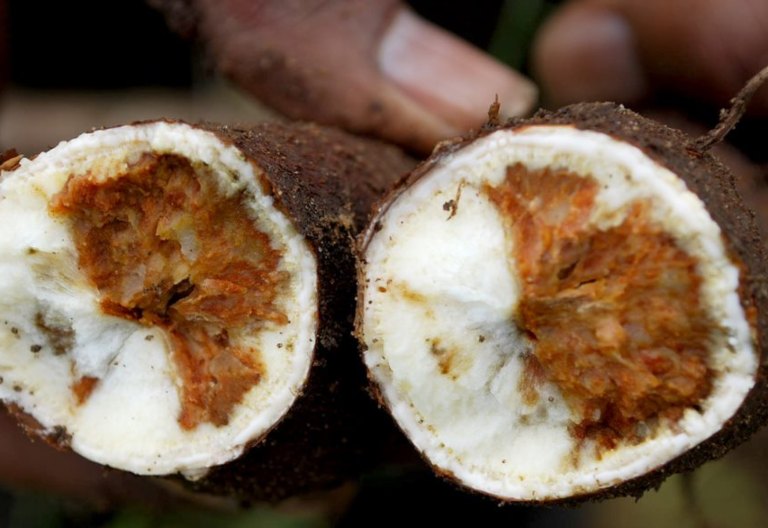Developing AI tools to reduce the spread of crop disease in east Africa
Manchester scientists are partnering with local farmers in east Africa to identify and reduce viral disease outbreaks among cassava crops using artificial intelligence (AI).
How viral disease outbreaks impact food supplies
The cassava crop is one of the most important staple food crops in the developing world, especially in Africa. It provides the third-highest yield of carbohydrates per cultivated area among crop plants and can survive in poor soils and low rainfall.
The crop is cultivated primarily by smallholder farmers, however its production is affected by two common viral diseases: the cassava mosaic and brown streak disease. These can be transmitted plant to plant, threatening food supplies and causing severe economic losses.
Climate change and global trade further contribute to the spread of these viruses as changing weather patterns encourage virus uptake in previously unaffected regions, while international produce and seeds trading help spread virally affected materials. The early containment, isolation and suppression of viral outbreaks is critical if they are to be controlled, given limited ability to mutate and ultimately, destroyed.

The problem with identifying cassava diseases
The cassava mosaic and brown streak diseases are transmitted by the whitefly or propagate from one season’s crop to the next through planting infected stem cuttings.
The impact of the cassava mosaic disease on food supplies has already been extensively studied with partners in the United States and sources of viral resistance are now bred into crop varieties. Unfortunately, many African farmers prefer the cassava cultivars variety, a crop which is more prone to brown streak disease.
Brown streak disease causes gangrenous lesions to spread throughout the entire tuberous root structure of the cassava plant, leaving it inedible. Typically, the leaves of infected plants turn yellow, but mild symptoms can make it hard for crop breeders and agricultural workers to recognise diseased plants.
As infected roots are only discovered when cassava is harvested, farmers often don’t know that their crop has the disease until almost a year after planting.
Developing AI tools to stop the spread of disease
Now, portable, low-cost field sensors that use AI to detect viral diseases in cassava crops have been developed by a team of electronic engineers from The University of Manchester, working alongside plant science and crop virology researchers at North Carolina State University in the US, and in partnership with the International Institute for Tropical Agriculture in Tanzania.
The handheld sensors collect images of growing cassava plant leaves and quickly and efficiently compare these images to a vast database of diseased and healthy crop images to detect early signs of brown streak disease.
The human eye can only detect the effects of brown streak disease after three or four months, whereas the sensors can detect the disease within the first two weeks of infection, helping to isolate the disease at its source and reduce the spread.
This new technology means crop breeders and agricultural workers can easily identify and eradicate disease outbreaks before they spread, and with further study, scientists could find a solution to prevent repeat cases in the future.
Meet the experts
- Professor Bruce Grieve (EEE), Director of e-Agri Sensors.
- Professor Hujun Yin (EEE), Professor of Artificial Intelligence.
